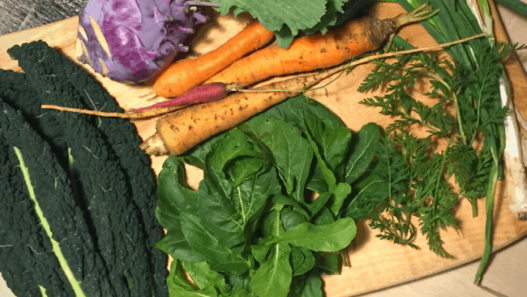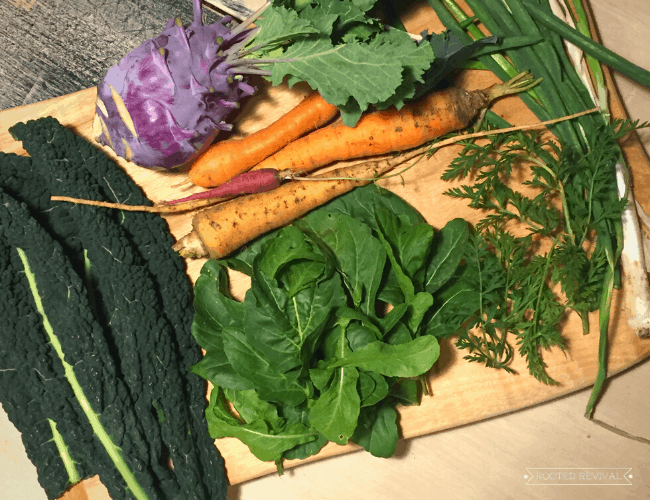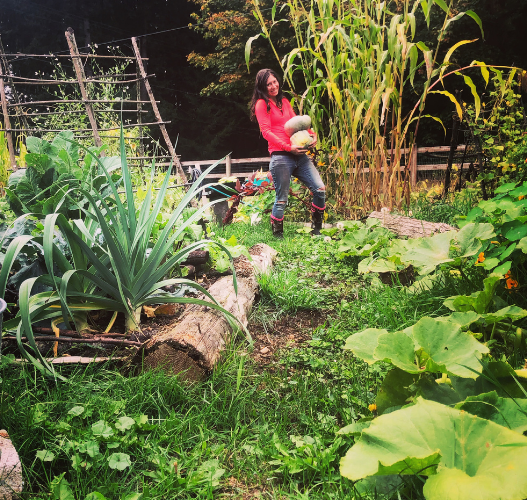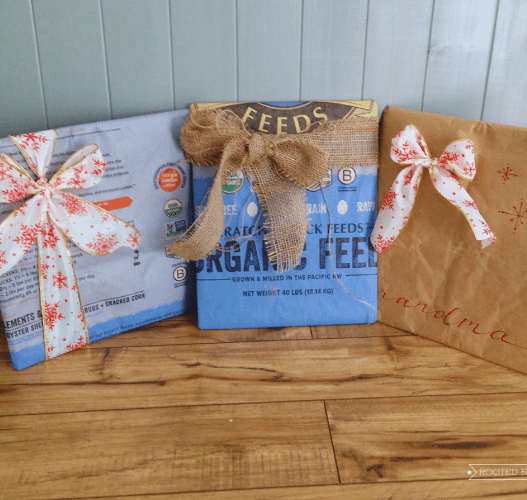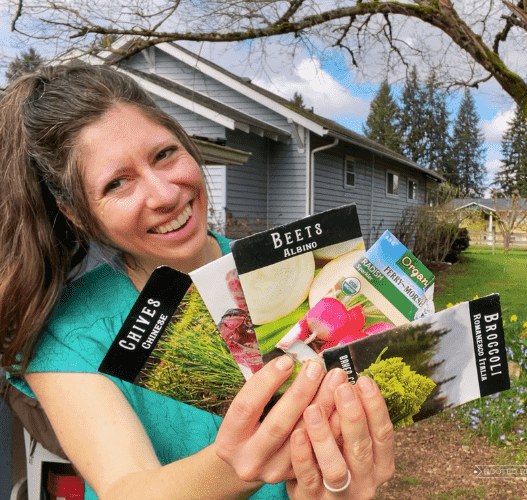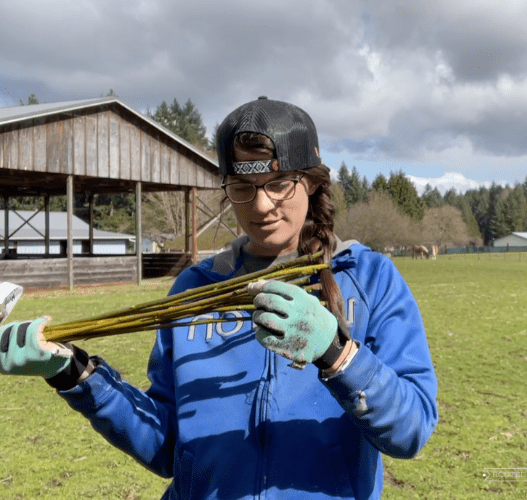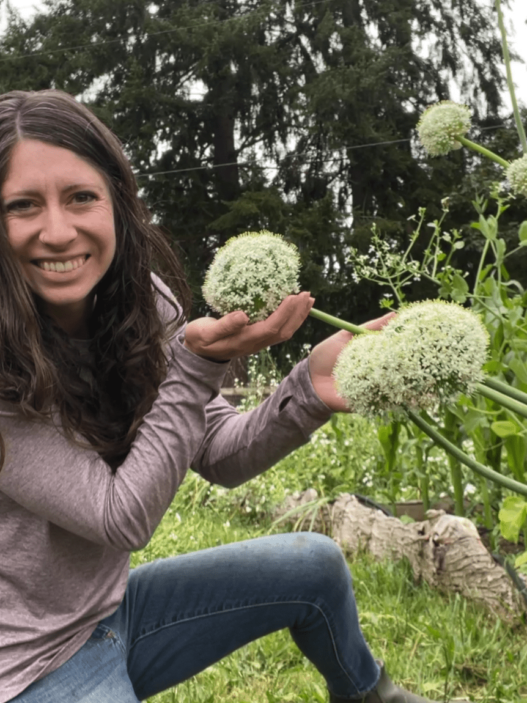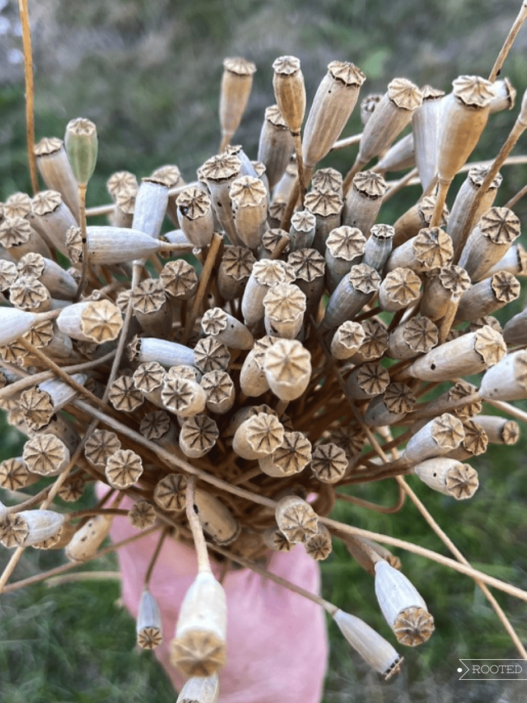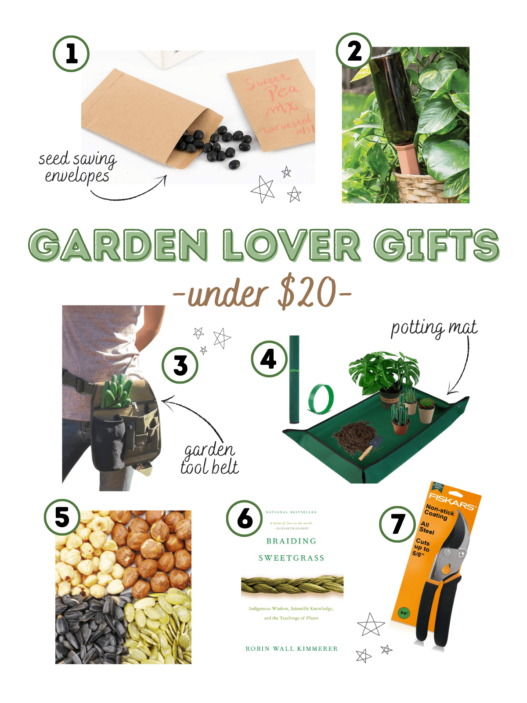Don’t stop growing just because the temps drop! Try these 20 cold hardy vegetables and herbs to make cool season gardening a breeze!
For years, I tried to squeeze all of my gardening into just a few months (primarily June through September). Those summer months were intensely hot and draining. Trying to grow, harvest and preserve a year’s worth of food in a matter of months was incredibly rewarding but also consuming. And by “consuming” I mean that I was a hot mess trying to keep up with it all!
It wasn’t until I had been gardening for several years that I started to rethink the break-neck pace that was required to grow and harvest everything during the intense summer heat of the high desert.
Slowly, I started learning how to sow and grow earlier in the spring and later in the fall. Once we moved to the mild climate of the Pacific Northwest, I really kicked my year-round gardening into full gear! And I found so many benefits: less hustling to try to “grow it all” all at once, more variety in my harvests and the ability to make the most of my garden space through seasonal plant rotation.
Cool Season Gardening
The secret to cool season gardening is knowing which plants to grow. There are tons of plants that will not only survive some cold weather, but thrive in it! Cold hardy vegetables and greens make cool season gardening a breeze!
That being said, every climate is different. Take time to experiment to see what grows best during the cool season in your environment. You may find that fall and early spring gardening is most ideal for you. Or, you may learn how to sustain certain crops all winter long!
Most cold hardy vegetables can survive substantial dips in temperatures. However, you may need some additional coverage for your cool season garden if you experience the following:
- Temps regularly dip below 25OF
- Your ground freezes hard for a substantial amount of time
- You get heavy layers of snow
- You get excessive amounts of rain that cause puddling

Tips to make cold weather gardening easier:
There are tons of easy ways to protect your cold hardy vegetables and continue growing almost year-round! Season extenders, such as unseated greenhouses, low tunnels, frost blankets and cold frames make excellent additions to any cool season garden. You can read more about them here in my post about fall gardening. This post will also give you some great info on the ideal time to start your plants so that they are well-established before the cold temps come!
You can also capitalize on microclimates around your property! For instance, I have a space that is south-west facing which capitalizes on the most sunlight possible. This space is sheltered on two sides by our cement house walls which serve to block drafts and also capture and reflect heat from the sun. Best of all, it is right below the dryer vent which pumps out warm air! Because of this fantastic microclimate, I can grow pots of cold hardy greens all winter long, conveniently located just outside my back door for easy harvesting!
Finally, mulching can help protect plant roots and help maintain more consistent soil temperatures. Mulches made of porous materials, like barks and spray-free straw & hay, can help to provide some protection to crops growing during the cold season. You can also cover your plants under a layer of mulch or pine boughs to protect them during particularly hard storms and then uncover them once it passes. Here is a post from Savvy Gardening with more information on how to use mulch to protect your cold hardy vegetables and greens.
20 Cold Hardy Vegetables and Greens for Your Cool Season Garden
If you are ready to try your hand at cool season gardening, here are 20 cold hardy vegetables and greens to start with! These veggies and greens won’t mind some frost or cold temps!
Below each veggie/green, I have listed the average ideal temperatures and the temperature that they are most likely hardy to. Remember that each plant and climate is different. So you may find slight exceptions to the listed temps, but this will give you a good range to refer to.
For each veggie/green, I have also listed some of the most ideal varieties based on my own experience and research. If you know of any outstanding varieties, let us know in the comments!
One final thing to note: it is ideal to have your plants well-established by the time the cold weather arrives. Most plants will experience slower growth during the cold weather and consistent frosts. If the plants are already established, frosts and cooler weather won’t cause much of an issue. However, if they are young seedlings, they may have a harder time. For this reason, I would encourage you to look at the “days to harvest” number and try to plant them at least that many days before your area starts experiencing regular cold temps and frosts.’
Alright, time to dive in and check out all these amazing cold hardy vegetables and greens!
Arugula
Days to harvest: 40 days
Hardy to: 25OF
Ideal day temps: 45-65OF
Best cold-hardy varieties: All varieties do well in cool temperatures
Beets
Days to harvest: 50-70 days
Hardy to: ~20OF although some varieties are hardy to 10OF
Ideal day temps: 50-75OF
Best cold-hardy varieties: Albina Verduna, Winterkeeper, Cylindra
Notes: If bulbs are not harvested and are left in the ground overwinter, they will sprout in early spring and produce delicious greens.
Broccoli
Days to harvest: 80-100 days
Hardy to: 10-20OF
Ideal day temps: 65-75OF
Best cold hardy varieties: Arcadia, Purple sprouting, Rudolph, White Sprouting, Calabrese, DeCicco
Brussel Sprouts
Days to harvest: 9-100 days
Hardy to: 10-20OF
Ideal day temps: 50-75OF
Best cold hardy varieties: Red Rubine, Oliver, Jade Cross, Long Island Improved
Notes: Frost can improve the flavor of Brussel Sprouts. Mature Brussel sprouts will keep well on the plant even through frost.
Carrots
Days to harvest: 70-80 days
Hardy to: 20OF
Ideal day temps: 60-70OF
Best cold hardy varieties: Danvers, Excel, Oxheart, Napoli, Bolero, Scarlet Nantes
Notes: Mature carrots can be stored in-ground over winter until you are ready to use them. Frost makes them sweeter.
Cauliflower
Days to harvest: 80-100 days
Hardy to: 10-20OF
Ideal day temps: 60-70OF
Best cold hardy varieties: Snow Ball, Prestige, Deadon, Snow Crown
Notes: Cauliflower plants can be overwintered in many regions (cover may be needed) or some varieties can planted in late winter/early spring for an early spring harvest.
Chives
Days to harvest: 60 days
Hardy to: 0OF
Ideal day temps: 40-80OF
Best cold hardy varieties: All varieties are suitable for cool temperatures
Garlic
Days to harvest: 90-110 days
Hardy to: 0OF
Ideal day temps: 40-50OF
Best cold hardy varieties: All varieties overwinter, but certain ones perform best in very cold regions, including German Red, Russian Giant, Chesnok Red, Georgian Fire, Music
Notes: Garlic is ideally planted in the fall, overwintered, and harvested in early summer.
Kale
Days to harvest: 60-90 days
Hardy to: 10OF on average
Ideal day temps: 55-75OF is ideal but can germinate in temps as low as 40OF
Best cold hardy varieties: All kale handles frost well. Curled leaf varieties are generally the most cold hardy. Some good varieties include Siberian, Vates, Russian, Winterbor,
Notes: Kale actually becomes sweeter after a few frosts. Even kale-haters might enjoy its flavor during the fall and early winter!
Kohlrabi
Days to harvest: 60 days
Hardy to: ~25OF for most varieties
Ideal day temps: 50-80OF
Best cold hardy varieties: Delicacy White, Kongo, Grand Duke
Leeks
Days to harvest: 120-160 days
Hardy to: 0OF
Ideal day temps: 65-75OF
Best cold hardy varieties: Siberia, King Richard, Bulgarian Giant, Alaska, Jaune du Poiteau, Seigfried
Mizuna
Days to harvest: 20 days for leaves, 40 days for heads
Hardy to: 10-20OF
Ideal day temps: 50-85OF
Best cold hardy varieties: All varieties tolerate frost and cold well
Notes: Mizuna is a mustard variety. It can tolerate cool temps and low light conditions, making it a great choice for winter growing.
Onions
Days to harvest: 100-120 days (from seed)
Hardy to: 0OF
Ideal day temps: 65-75OF
Best cold hardy varieties: Walla Walla, Keepwell, White Multiplier, Bridger, Hi-Ball
Notes: Can be planted in fall and overwintered in certain regions for an early spring harvest
Parsley
Days to harvest: 70-90 day
Hardy to: 10OF
Ideal day temps: 50-70OF
Best cold-hardy varieties: Italian flat leaf does slightly better than curled varieties but both are very cold tolerant
Parsnips
Days to harvest: 100-120 days
Hardy to: 0OF
Ideal day temps: 45-65OF
Best cold hardy varieties: All varieties
Notes: Seeds are slow to germinate and slower in cool soils (50OF and below). Parsnips are at their best flavor after several frosts and cold nights (mid-20 OF ). Mature parsnips can be stored in-ground over winter until you are ready to use them.
Radishes
Days to harvest: 30-40 days
Hardy to: ~25OF for most varieties
Ideal day temps: 50-60OF
Best cold-hardy varieties: Most varieties handle frost well. Asian varieties (Diakon, China Rose, Watermelon) handle cold temps the best.
Notes: Radishes can become “spongy” in texture when they experience sustained or repeated hard frosts when the ground freezes and thaws.
Spinach
Days to harvest: 40-50 days
Hardy to: ~15OF
Ideal day temps: 50-65OF
Best cold-hardy varieties: Bloomsdale, Savoy, Olympia
Notes: Does best under some light row cover when temperatures drop below 20OF on a regular basis.
Swiss Chard:
Days to harvest: 60-70 days
Hardy to: ~15OF
Ideal day temps: 50-85OF
Best cold-hardy varieties: Green chard usually does better in cold temps compared to rainbow or colored varieties.
Tatsoi:
Days to harvest: 20 days for leaves, 40 days for heads
Hardy to: 10-15OF
Ideal day temps: 50-70OF
Best cold hardy varieties: All varieties are cold tolerant
Notes: This is a mustard family crop, closely related to Mizuna. Its flavor improves with cold weather and light frosts.
Turnips
Days to harvest: 40-50 days
Hardy to: 10OF
Ideal day temps: 50-75OF
Best cold hardy varieties: Purple Top White Globe, Hakurei
Notes: Mature turnips can be stored in-ground overwinter and will become sweeter after experiencing some cool nights.
